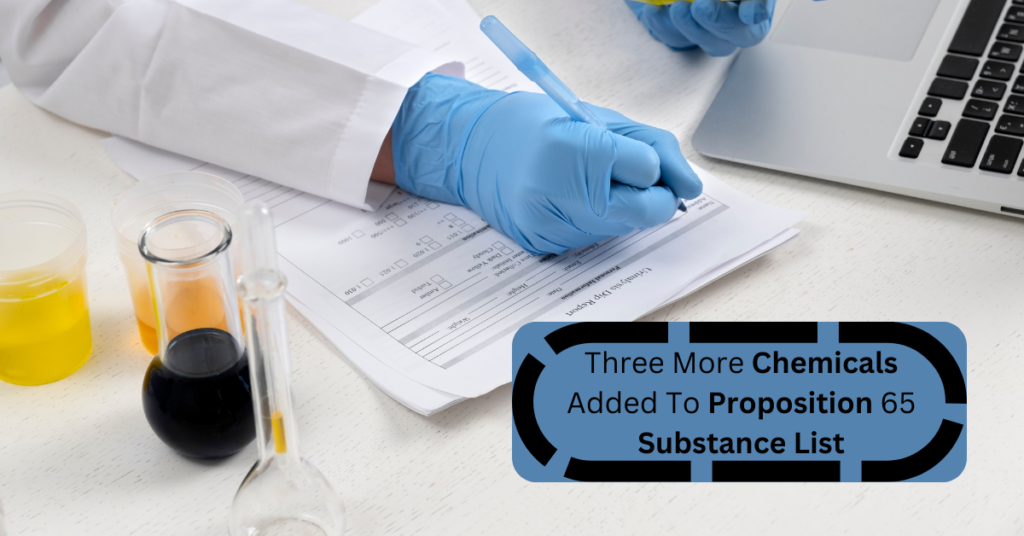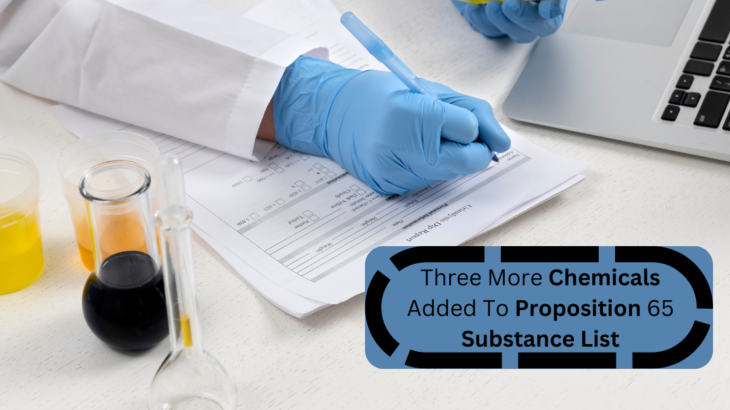
The Safe Drinking Water and Toxic Enforcement Act, or Proposition 65, implemented in 1986, was based on protecting California people from potentially risky chemicals and toxins produced by various products. Hence, it makes businesses offer caution with their products if they contain substances under the Prop 65 candidate list. Understanding the Proposition 65 Substance List and its importance is crucial for consumers and businesses in California. In this article, we will delve into the details of Proposition 65 and why it matters.
The Proposition 65 Substance List
It is to be noted that the Prop 65 candidate list encompasses over 900 chemicals identified by the State of California that can potentially harm reproductive issues or cancer. Also, these potentially harmful chemicals can be found in products from beverages and food to workplace and household items.
California has established safe harbor thresholds, indicating the levels of exposure that trigger the need for warnings for numerous chemicals featured on the list. Instances where exposure falls below these defined levels do not necessitate a warning.
For example, one of the chemicals listed under Prop 65 Candidate List is lead, which can be found in jewelry items. Hence, the importers and manufacturers of jewelry items should caution their customers that they are exposed to lead in the jewelry if its quantity exceeds 0.5 micrograms per day of the safe harbor threshold.
Three Chemicals Added To The Prop 65 Candidate List:
The Office of Environmental Health Hazard Assessment (OEHHA) on 11th August 2023, has included anthracene, 2-bromopropane, and dimethyl hydrogen phosphite in the substances catalog recognized by the State of California as cancer-causing agents under the Safe Drinking Water and Toxic Enforcement Act of 1986, specifically under sections 25249.5 et seq. of the Health and Safety Code (HSC), commonly referred to as Proposition 65.
Anthracene finds frequent application as a starting material for creating dyes, pigments, and fluorescent substances. Dimethyl hydrogen phosphite is used as a reagent in pharmaceuticals, agrochemicals, and specialty chemicals as a part of organic synthesis. This chemical is also used as a smoke suppressor and flame retarder.
2-Bromopropane is identified as “carcinogenicity” because it causes reproductive issues in male and females. However, 2-Bromopropane finds its application as a solvent in industrial cleaning and degreasing processes and serves as a chemical intermediate for synthesizing pharmaceuticals and specialty chemicals.
Hence, as a result of California Law making it conditional to The International Agency for Research on Cancer (IARC) that these substances should be included under the list of carcinogens Prop 65. Hence, IARC recognized that 2-bromopropane as “probably to cause cancer in humans”, while anthracene and dimethyl hydrogen phosphite are “possibly to cause cancer in humans”. In addition, IARC also found that these substances cause carcinogenicity in animals.
When substances are added to the regulated substances list of California Proposition 65, it imposes immediate responsibilities on impacted businesses. Sunstream can assist in this regard by gathering substance information from your suppliers on your behalf and cross-referencing it with the roster of chemicals subject to regulation under California Proposition 65. We can also provide guidance for various other regulations such as conflict mineral compliance and Safety Data Sheets (SDS).




 +1.585.935.7123
+1.585.935.7123 +91-804-148-6861
+91-804-148-6861